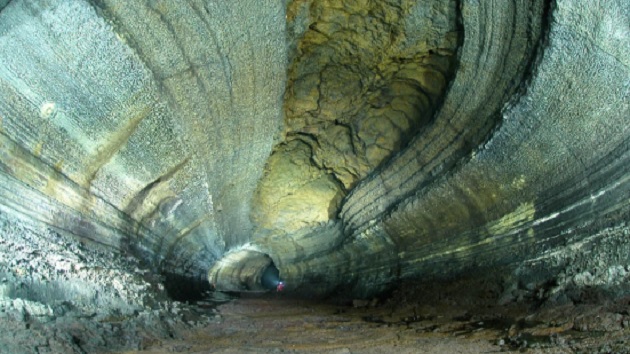
This week on Jeju: A to Z, Todd Thacker introduces one of the island’s world-renowned natural sites, the remarkable Manjanggul lava tube system in Gujwa-eup, Jeju City.
You don’t have to be a geologist or spelunker to appreciate a rare example of an ancient ? yet well-preserved ? lava tube system. Visitors to Jeju Island have the chance to explore a spectacular combination of science and beauty.
[Slug CG] Manjanggul-gil, Gujwa-eup, Jeju City
This is Manjanggul Cave, in the Gimnyeong area of Gujwa-eup, about a 30 minute drive east of Jeju City.
The full length of this cave system is 7.4 kilometers. In some places its ceiling towers to some 23 meters in height and 18 meters across.
[Slug CG] 1 km of the full 7.4 km is open to the public
Approximately 1 kilometer of the cave is accessible to the public. Though it’s rather dark and the floor is uneven in places, if you wear comfortable shoes and bring a jacket, it’s still a great place for the whole family to explore.
[Slug CG] Discovered by students and their teacher in 1946
The reason Manjanggul is in such good condition is that it was only discovered relatively recently. A group of students and their teacher from Gimnyeong Elementary School stumbled upon one of its three natural entrances in 1946.
[Slug CG] Recognized by the Korean gov’t and UNESCO
In all, this natural treasure has been given three national and international designations, including a UNESCO-mandated Geopark designation in 2010, a World Natural Heritage in 2007 and Korean Natural Monument No. 98 in 1970.
[Slug CG] Todd Thacker
Given its geological importance and sheer natural wonder, there’s little doubt that a visit to Manjanggul will enthrall you. Come and appreciate the beauty ? and science ? of the island’s geological origins.
Todd Thacker, KCTV





